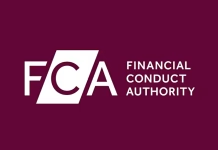Refinitiv Lipper has seen a bounce back for bond funds in Q2 2020 after they suffered losses of -4.3% and outflows of US$208.9 billion induced by COVID-19 during the first quarter.
The group of 51 fund peer groups that are observed in the Lipper study appreciated by 5.3% on average and took in total net new money of slightly more than $168 billion. Within these, US taxable bond funds were slightly more prosperous than US tax-exempt bond funds in Q2, posting an average increase of 6.3% with net positive flows of $155.6 billion in Q2 compared to the 2.4% gain recorded by municipal bond funds, with net inflows of $12.9 billion.
After losing 1.3% on average in the first quarter, Investment-Grade Corporate Bond Funds appreciated 5.2% in Q2. World Fixed Income Funds recorded a 9.3% increase in Q2 after losing 10.6% last quarter. General US domestic taxable fixed income funds – mainly invested in junk bonds – posted a 7.8% gain in Q2 after suffering the worst loss among the macro-groups (-10.6%) in Q1.

Fixed income investors have been helped by the support of the Federal Reserve. Having exhausted its rates cutting ability in Q1, with a current range of 0.00% to 0.25%, Pat Keon, senior research analyst at Refinitiv Lipper and report author, wrote, “The Fed has been innovative in its measures to help the country weather the storm.”
Along these lines, the Fed has unveiled new emergency programmes such as the Secondary Market Corporate Credit Facility (SMCCF), which was established to support credit to large employers by providing liquidity for outstanding corporate bonds. These are designed to increase liquidity through the purchase of corporate bonds, corporate bond exchange traded funds (ETFs) and municipal debt for the first time in its history.
The last report published by The Fed on 10 July 2020 indicated that it has bought US$1.497 billion of corporate debt directly, and US$7.9 billion of bond ETFs. The purchasing programmes have proven somewhat controversial, as investments are in larger firms’ bonds, which critics have observed are not as exposed to risk. The top ten bond issuers by purchase value include Apple, Bayer, Berkshire Hathaway and Pepsico.
As well as these lending programs, in June The Fed indicated that the central bank would also look at alternative ways stimulate the economy.
“While the Fed did not anticipate having any new initiatives ready by its July meeting, it did forecast that the September meeting might unveil some news in this area,” wrote Keon. “Despite the recent signs of an economic rebound, Federal Reserve Chairman Jerome Powell warned that the economy could face long-term damage due to the small business failures and unemployment that has been caused by the pandemic.”
©Markets Media Europe 2025













